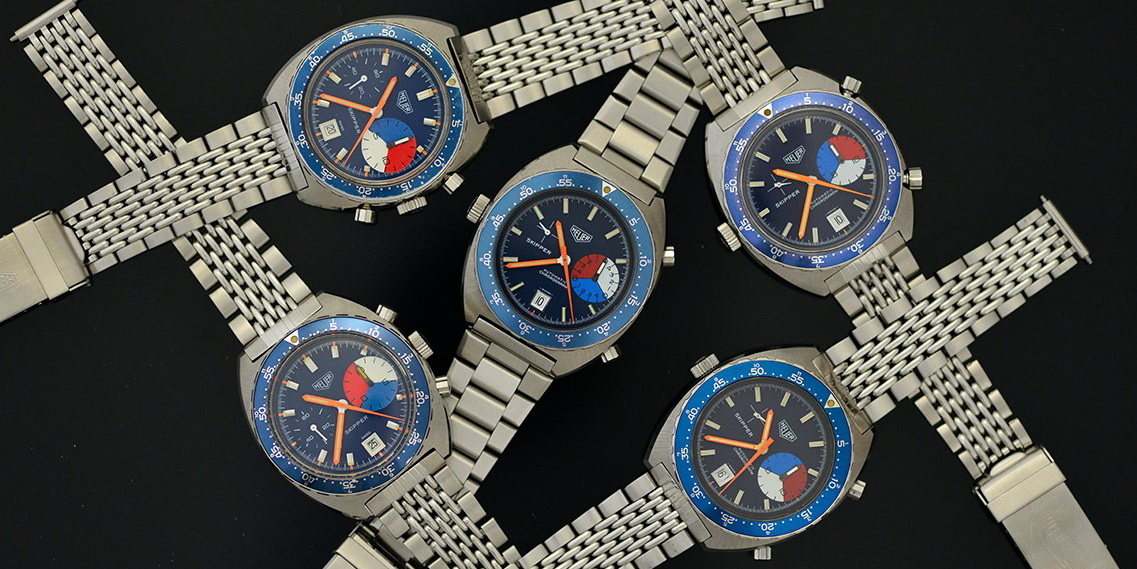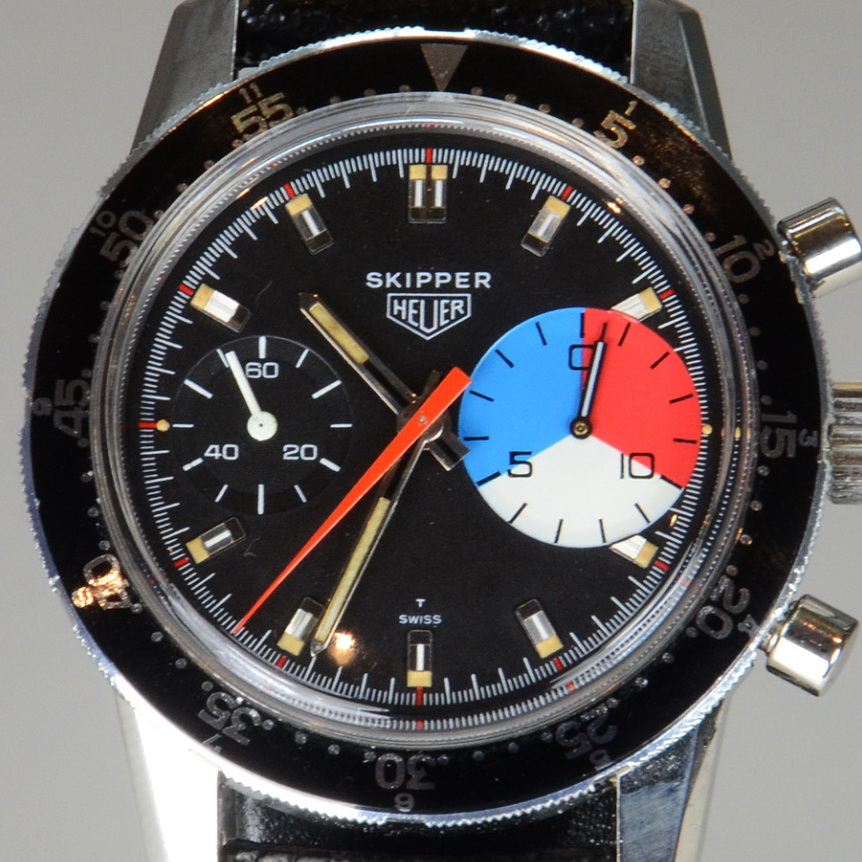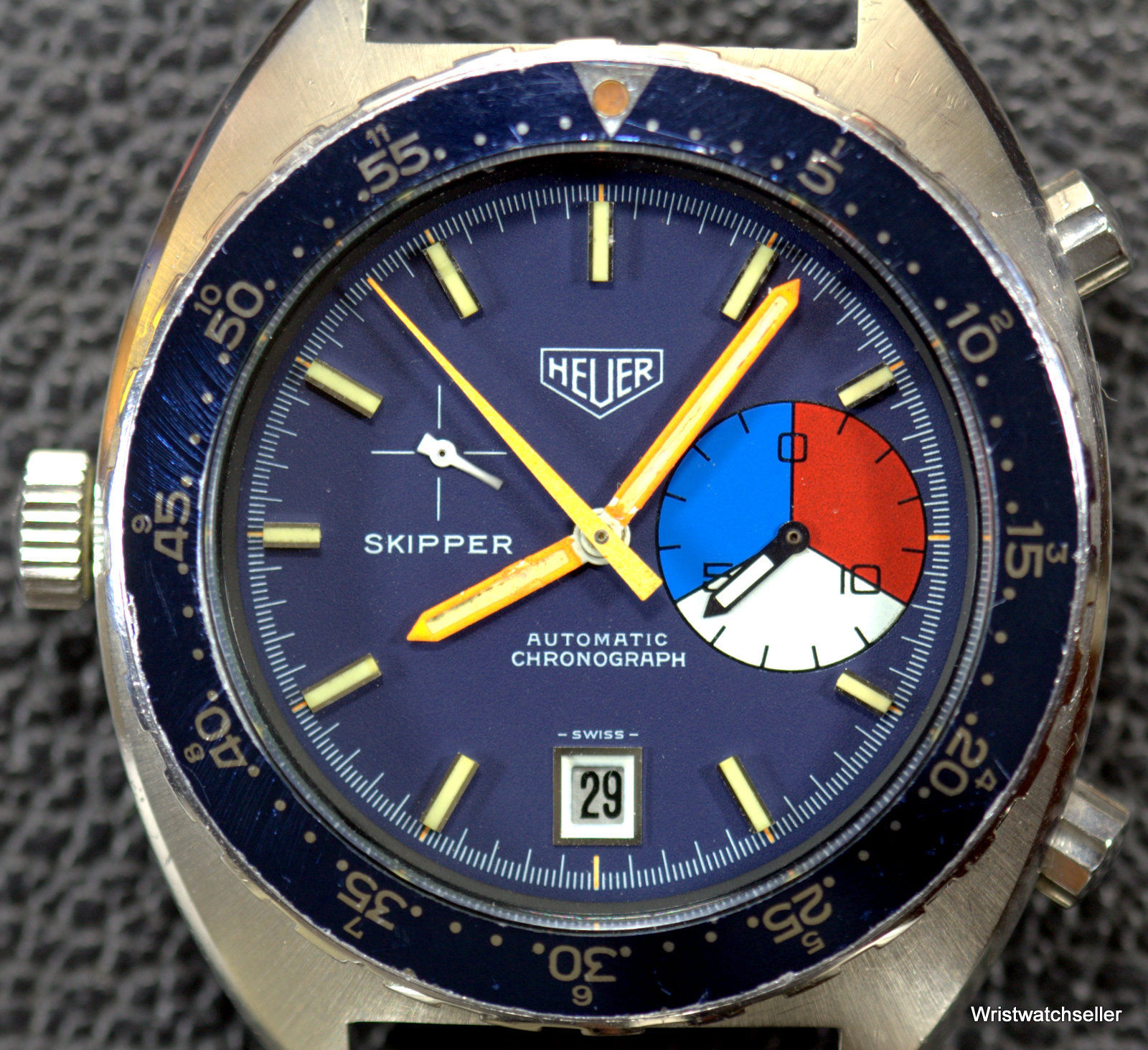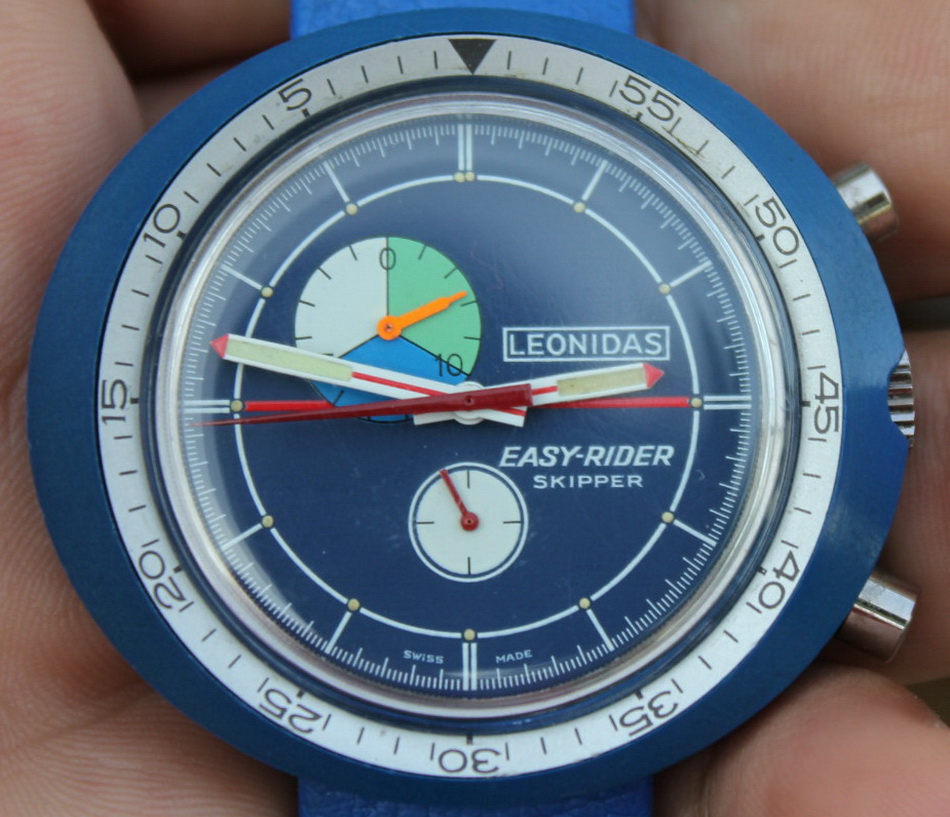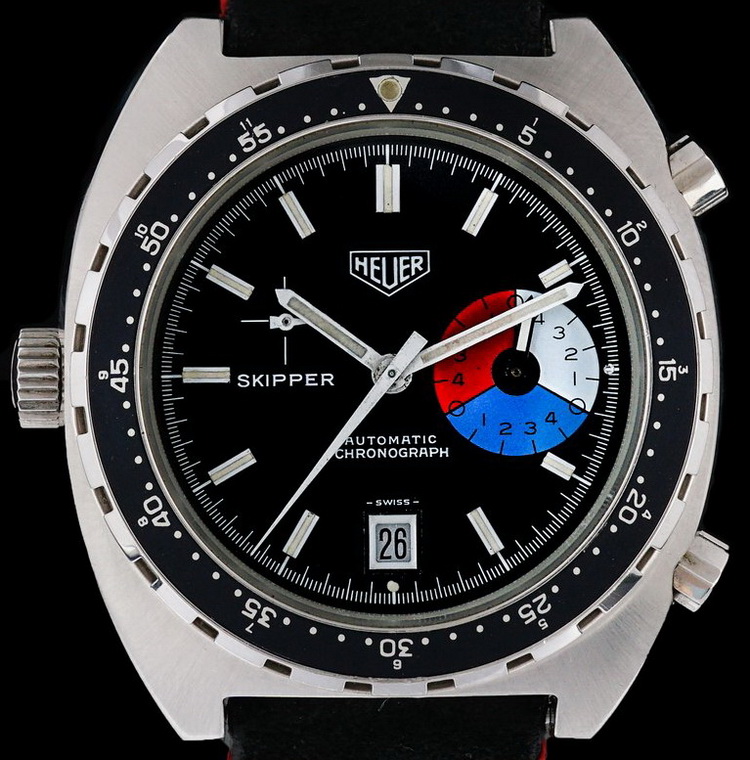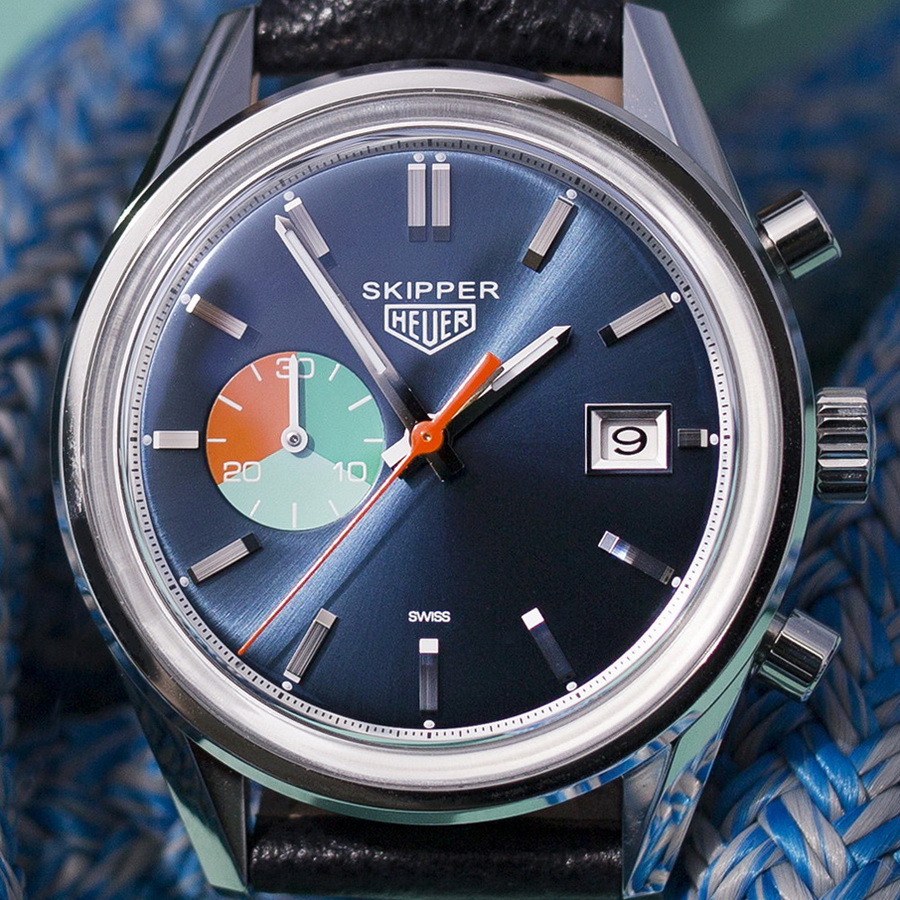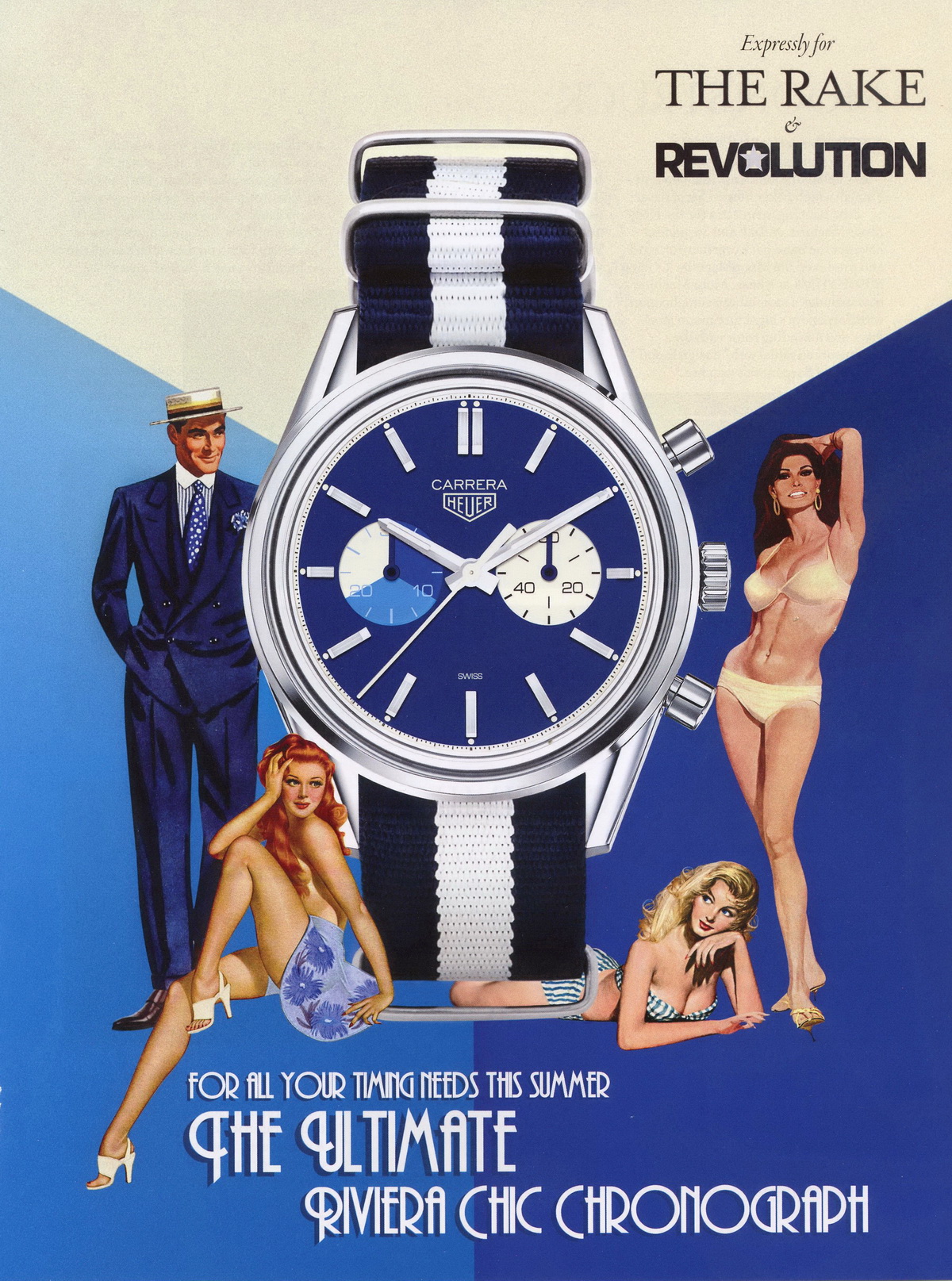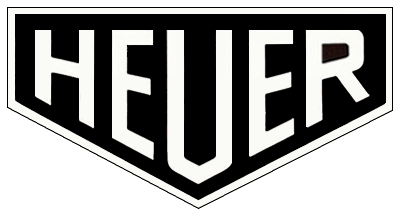Heuer introduced the Skipper chronograph in 1968 and offered a total of nine models and executions until it was discontinued in 1983. In 2017 and 2018, TAG Heuer offered two limited edition chronographs that were inspired by the Skipper, in collaborations with Hodinkee and Revolution / The Rake. In this posting, we present this very brief history of the Heuer Skipper chronograph, along with recommendations for additional reading. We also include a Gallery showing some of the Skipperrera chronographs that we have recently added to OnTheDash.
[Lead image courtesy of HeuerChrono.com]
The Skipper Story
Heuer provided the crew of team Intrepid with stopwatches, chronographs and other timing equipment for Intrepid’s defense of America’s Cup in 1967, and when the team was successful, Heuer celebrated with the launch of a new chronograph, the Skipper.
1968 — The Skipperrera. The first Skipper (Reference 7754) was derived from the Carrera 30 chronograph (Reference 7753), with modifications so that the Skipper would be ideally suited for yacht timing (regatta). Instead of the chronograph counting up to 30 minutes, the minute register counted down the 15 minutes from the sounding of the first horn to the moment when the competitors may cross the start line, with the register marked in five-minute segments. Each segment had a distinctive color, with the three segments of the Skipper being dark green, light green/blue and orange. OTD Gallery of the Skipperreras is HERE.
All models and executions of the Skipper shared this key feature for yacht timing — a chronograph recorder that counts down 15 minutes, with the recorder divided into three segments, each having a different color.
1969 — Compressor Case (Reference 7764) The Skipperreera, in its Carrera case, was produced only in 1968, and in 1969 Heuer moved the Skipper to a new case that would be more appropriate for life on the ocean. The Skipper (Reference 7764) would now be housed in the 40 millimeter compressor case of the Autavia (Reference 7763), which offered superior waterproofing to the Carrera. This new Skipper was marked with the guarantee that appeared on all Autavias since their introduction in 1962 – “Waterproof Guaranteed 330 Feet Under Water”. The segments on the countdown recorder were oversized and changed to the changed to the more customary red, white and blue. OTD Gallery of the Reference 7764 Skipper is HERE.
1972 — The First C-Shape Cases — Manual (Reference 73464) and Automatic (Reference 1564) In 1969, Heuer introduced its first automatic Autavias (Reference 1163), with the larger Calibre 11 movement being housed in a 42 millimeter C-shape case. By 1972, Heuer was using C-shape cases for Autavias with both manual-winding and Calibre 15 automatic movements. Once again, the Skipper moved to a new, larger home (42.5 millimeters), being offered in both manual-winding (Reference 73464) and automatic (Reference 1564) options. OTD Gallery of the Reference 73464 Skipper (first execution) is HERE; Skipper 73464 (second execution) is HERE; see the Reference 1564 Skipper HERE.
1972 to 1978 — Mineral Crystal Models (Reference 15640) In late 1972, Heuer modified the case for the automatic Autavia, so that it would accommodate a mineral crystal. These cases (Reference 15640 for the Skipper) have a higher profile than the earlier C-shape cases, with a relatively thick black flange between the crystal and the dial. Around 1978, Heuer offered a new version of the Reference 15640 Skipper, with a gloss-black dial contrasting with the bright white time-of-day hands. The bezel returned to black, to match the dial.
1972 — The “Easy Rider” Skipper — In 1972, Heuer introduced the Easy Rider model chronographs, inexpensive chronographs with pin-lever movements and monocoque cases. Rather than diluting the Heuer brand with these low-quality chronographs, the Easy Rider chronographs had the “Leonidas” brand name on the dial. There were two executions of the Easy Rider Skipper (Reference 423.804), both with a blue case, countdown minutes bezel, and 15-minute countdown register. The first execution had green, blue and white segments on the minute recorder; the second execution had red, white and blue segments.
1983 — The Last of the Skippers — The final version of the Skipper (Reference 15640; third execution) was housed in the last case that Heuer would make for the Autavia (Reference 11063). This case offers a beefier look, with 21 millimeters between the lugs (versus 20 millimeters on previous Autavia cases that housed the Skipper) and the hefty geometry of the bezel. The bezel is unidirectional, rotating only counter-clockwise.
2017 — TAG Heuer Limited Edition Skipper for Hodinkee — 50 years after Intrepid defended America’s Cup, TAG Heuer created the Limited Edition Skipper for Hodinkee. Rather than being a re-issue of one of the original vintage models, the Hodinkee design team combined elements of the very first Skipper (the Skipperrera) with defining features of another vintage Heuer, the Carrera 45 Dato. The colors of the dial and minute recorder matched those of the original Skipper, with the date at three o’clock mimicking the asymmetry of the Carrera 45 Dato. The Limited Edition was produced in a series of 125 watches, which sold out quickly.
2018 — TAG Heuer Limited Edition “Blue Dreamer” Carrera for The Rake & Revolution — In May 2018, The Rake and its sister publication Revolution announced a new limited edition of the TAG Heuer Carrera, nicknamed the “Blue Dreamer”, which was inspired by the Skipperrera. The chronograph minute recorder is divided into three pie-shaped areas, each a different shade of blue, and the Blue Dreamer places a running seconds recorder at the three o’clock position.
The Skipper Bibliography
Skipper Chronographs
- The Rise of the Skipperrera (Hodinkee) — How the Skipperrera went from being unknown and unloved 10 years ago to its current position as the most valuable of the vintage Heuer chronographs.
- The Voyage of the Skipper (OnTheDash) — Provides background on Heuer’s production of stopwatches and other timepieces for yacht timing, and descriptions of each of the models and executions of the Skipper chronograph.
- The Story of the Heuer Skipper (HeuerChrono.com) — heuerchrono.com provides comprehensive information about the Heuer Skipper, the Heuer Regatta and other Heuer yacht timers. begin your exploration with this overview of the Skipper models.
- Skipper Grid 2.0 (HeuerChrono.com) — See all the models and executions of the Skipper chronograph, in one table.
The TAG Heuer x Hodinkee Limited Edition Skipper Chronograph
- The TAG Heuer Limited Edition Carrera Skipper For Hodinkee (Hodinkee) — This posting describes the history of the Skipper and introduces the Limited Edition Skipper for Hodinkee.
- Discovering the TAG Heuer Limited Edition Carrera Skipper for Hodinkee (Revolution) — An interview with Louis Westphalen, the vintage watch specialist at Hodinkee who led the development of the watch. (June 28, 2017)
- First Look — TAG Heuer Skipper Calibre 18 Hodinkee Edition (Ref. CAR221B) — Calibre 11 provides an introduction of the Hodinkee Limited Edition Skipper
The TAG Heuer x Rake & Revolution “Blue Dreamer” Carrera Chronograph
- TAG Heuer x The Rake & Revolution “Blue Dreamer” Carrera Chronograph (Revolution) — Wei Koh introduces the “Blue Dreamer” Limited Edition Carrera Chronograpah (February 28, 2018)
Skipperrera Gallery
In connection with the publication TBA, we have added several Skipperrera chronographs to OnTheDash. Here are some of the new photographs that we have added.
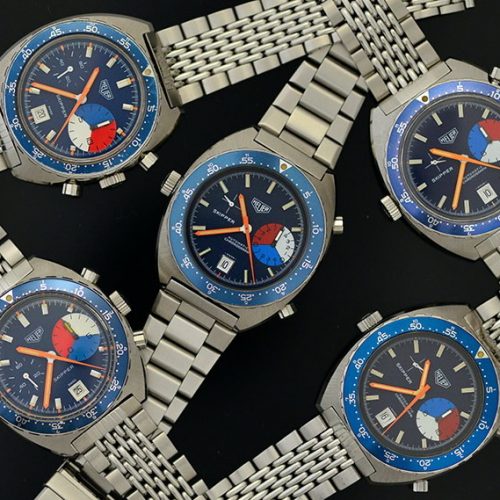
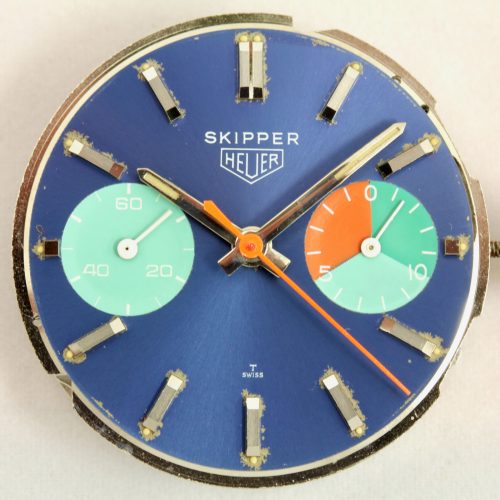
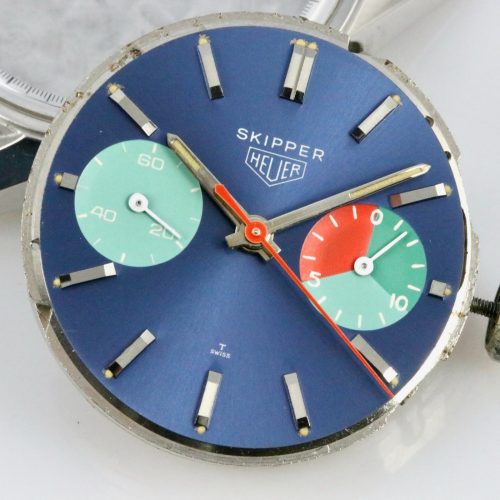
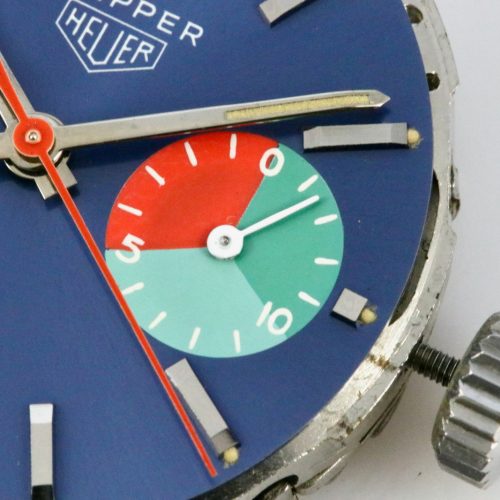
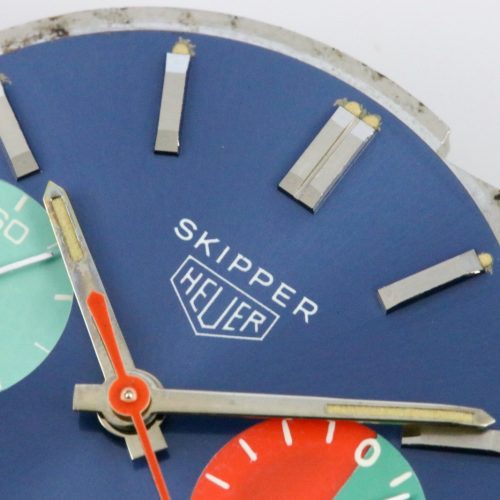
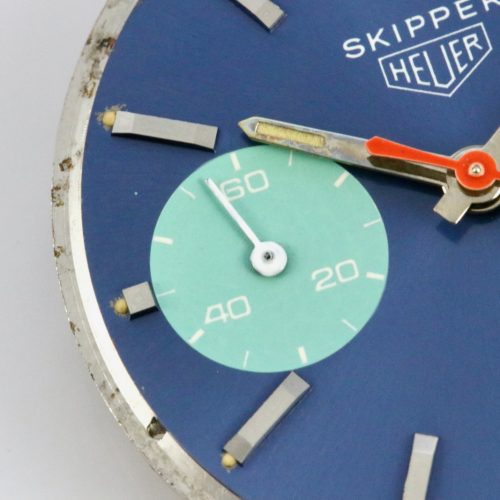
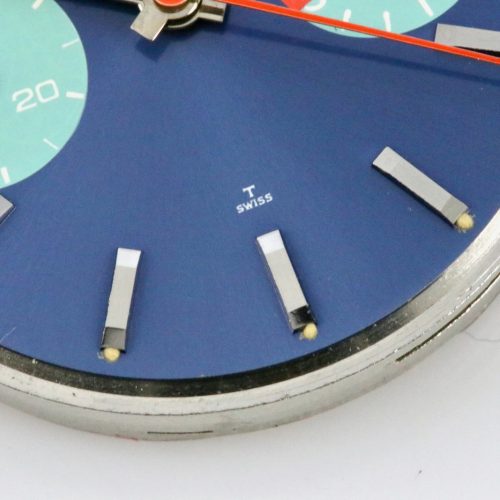
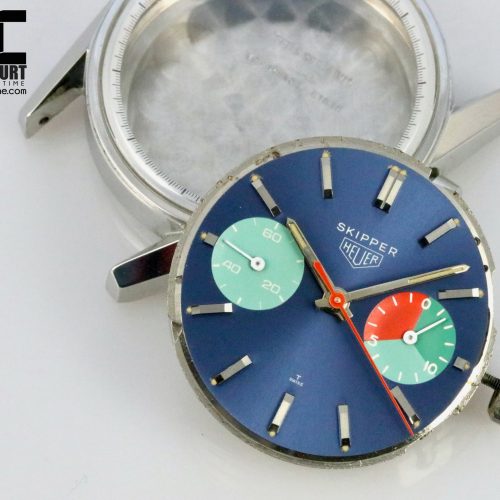
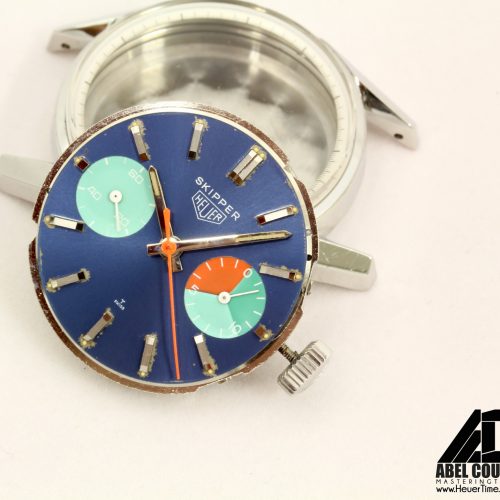
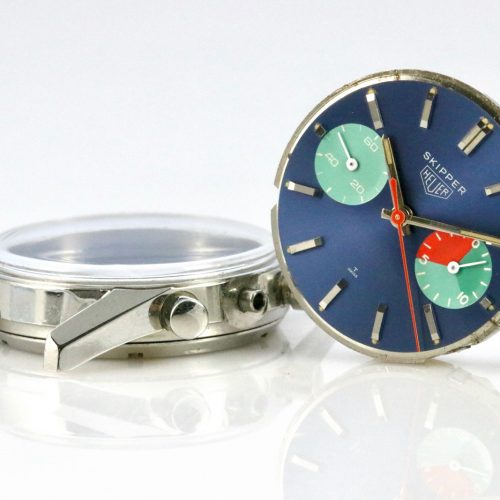
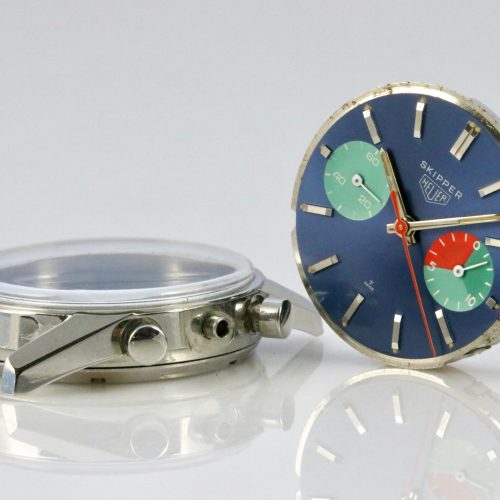
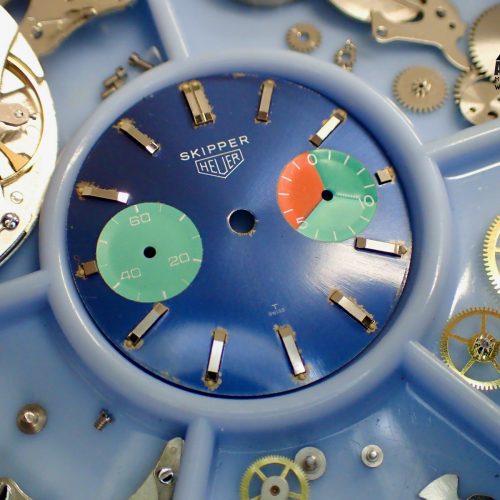
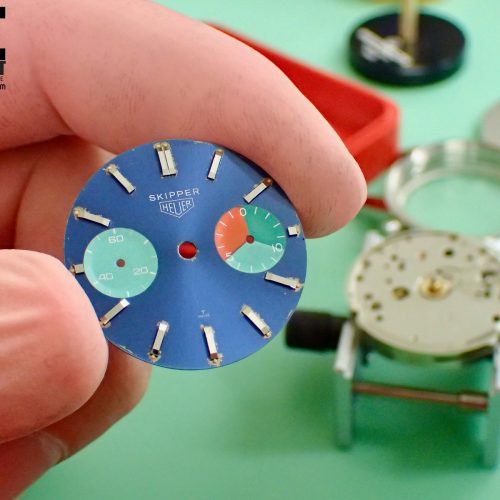
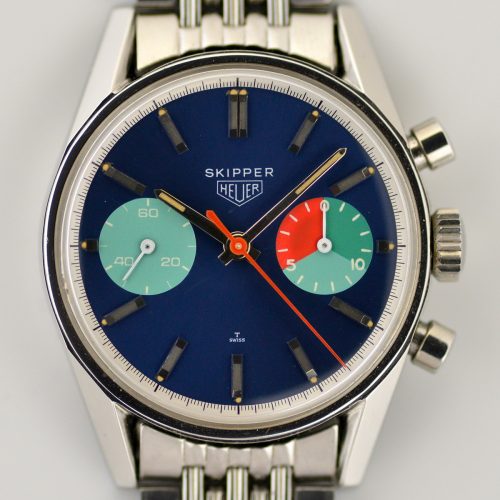
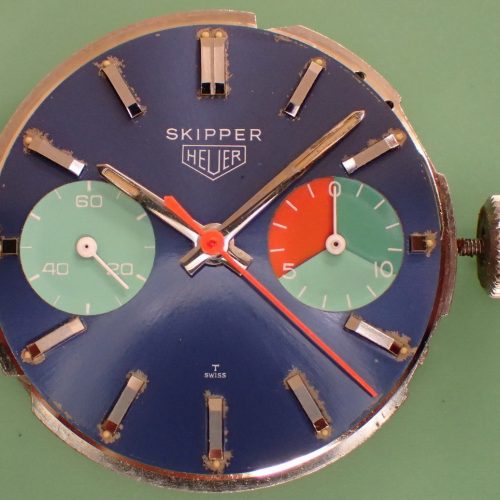

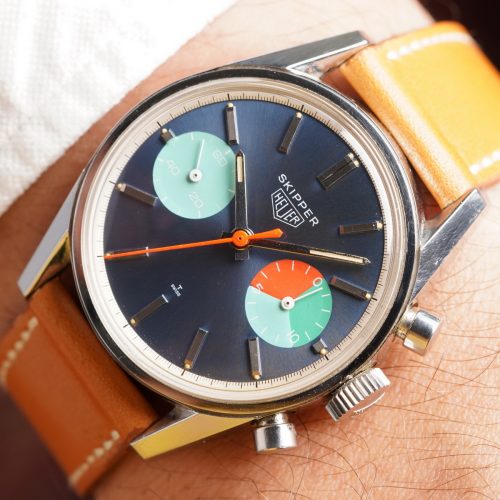
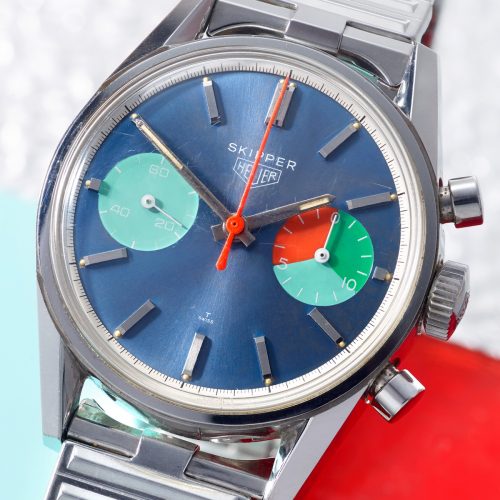
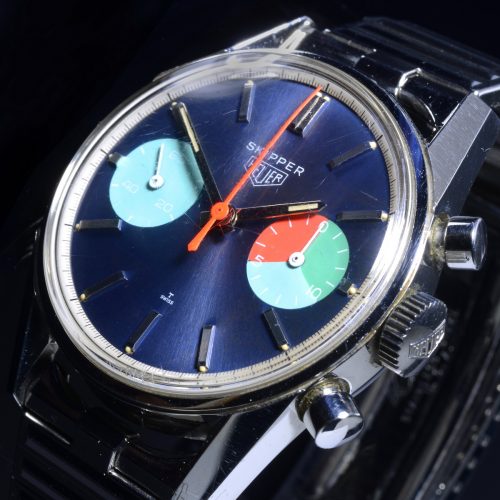
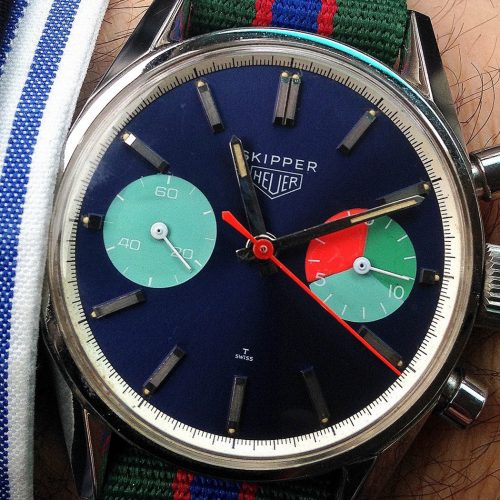
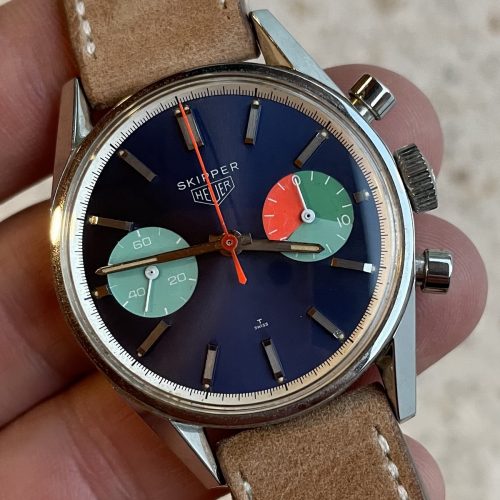
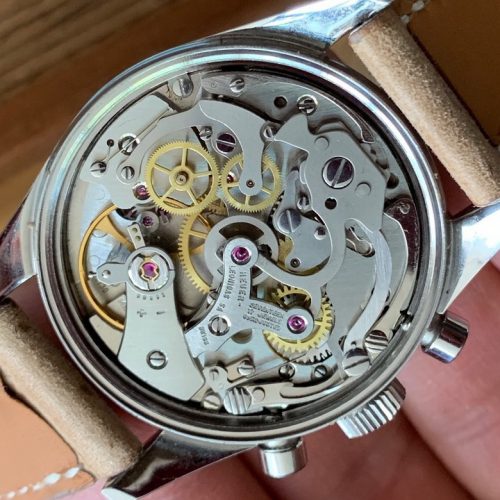
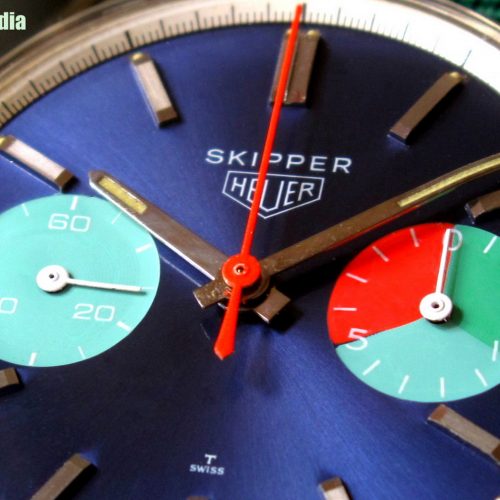
Thanks
For the most recent photos, sincere thanks to Abel Court (HeuerTime), Eric Wind (Wind Vintage), Fred Mandelbaum (@WatchFred) and Heuerchrono.com.
Jeff Stein
February 17, 2021
